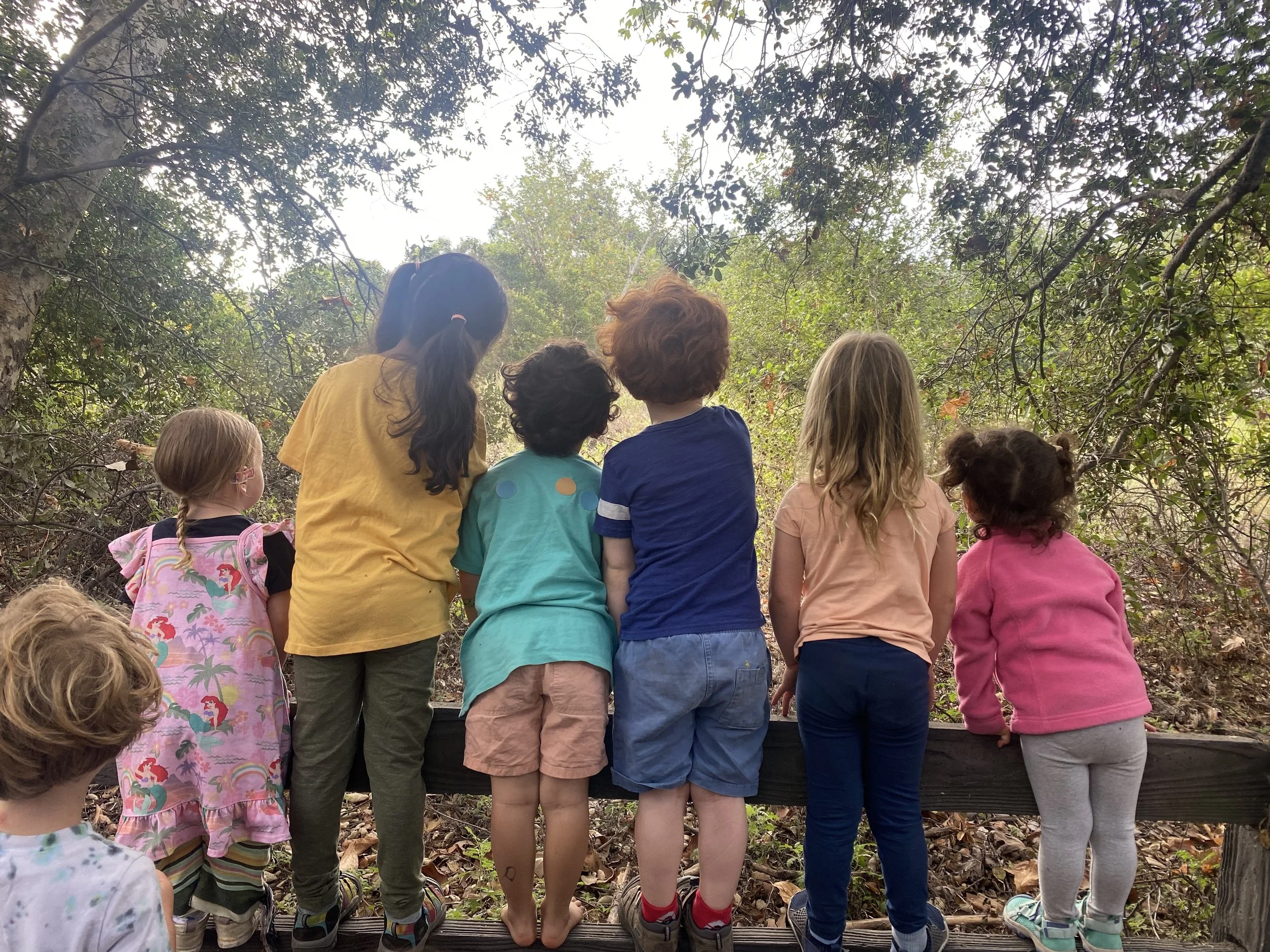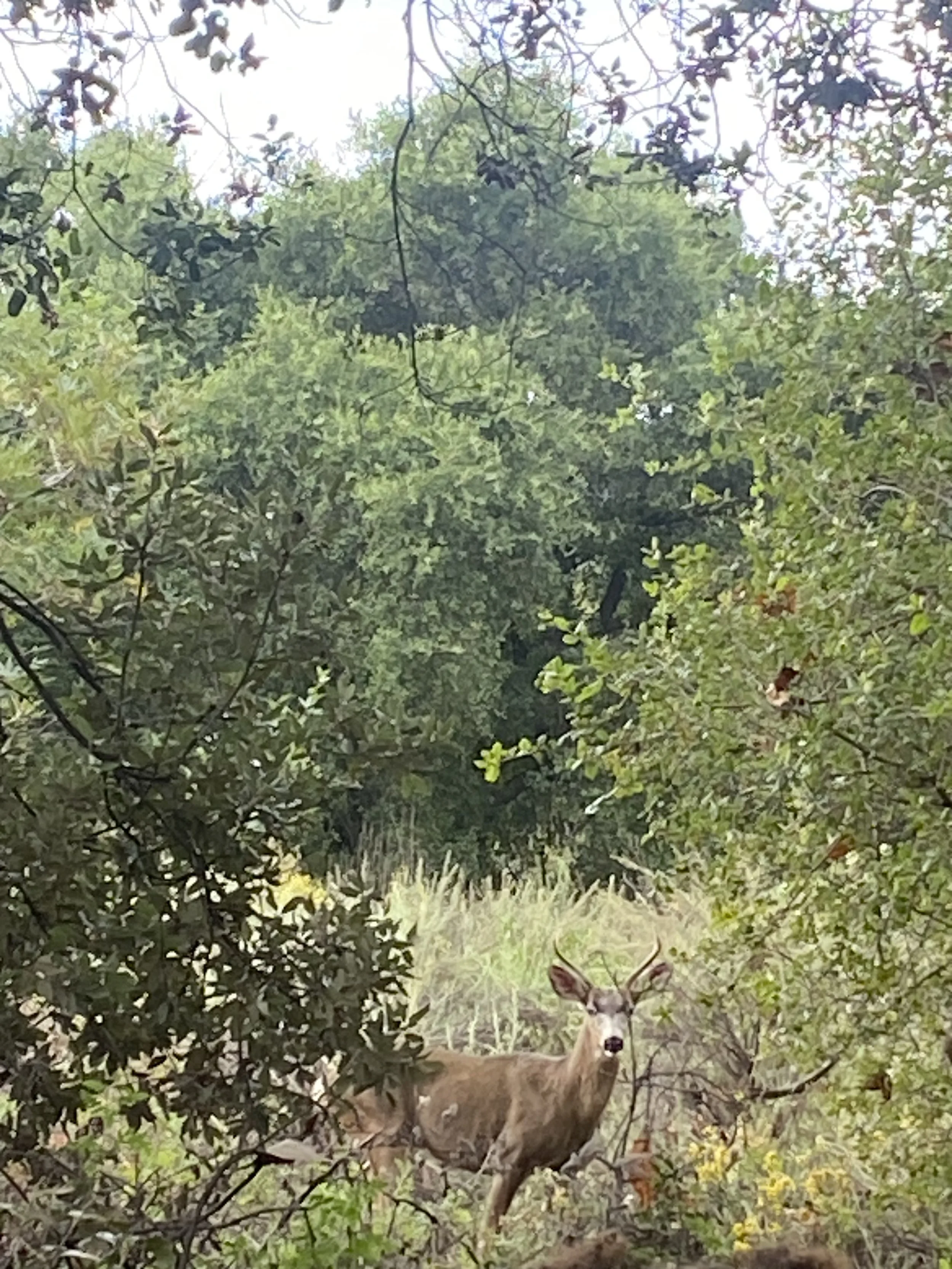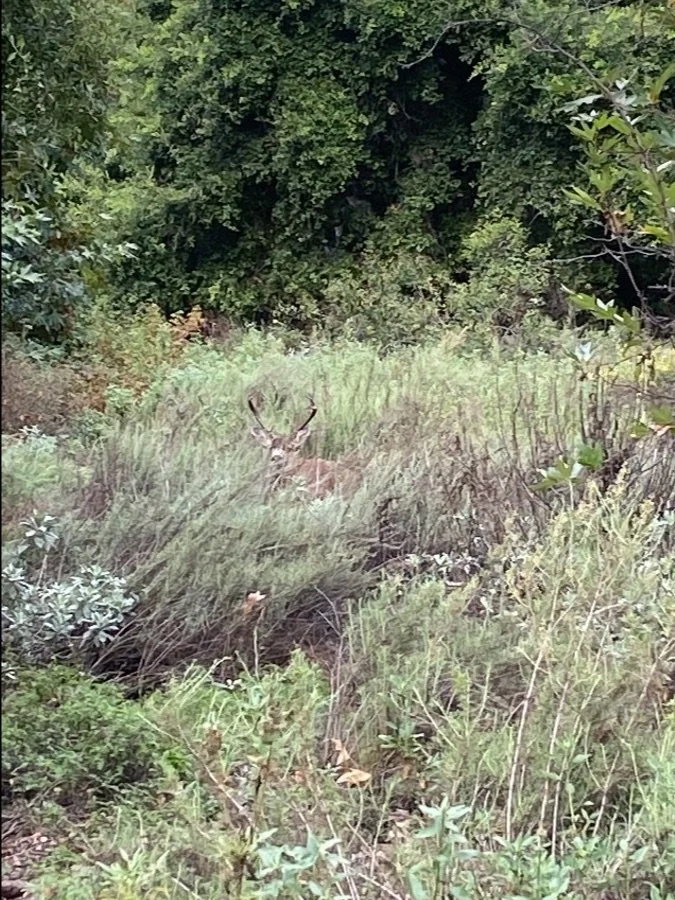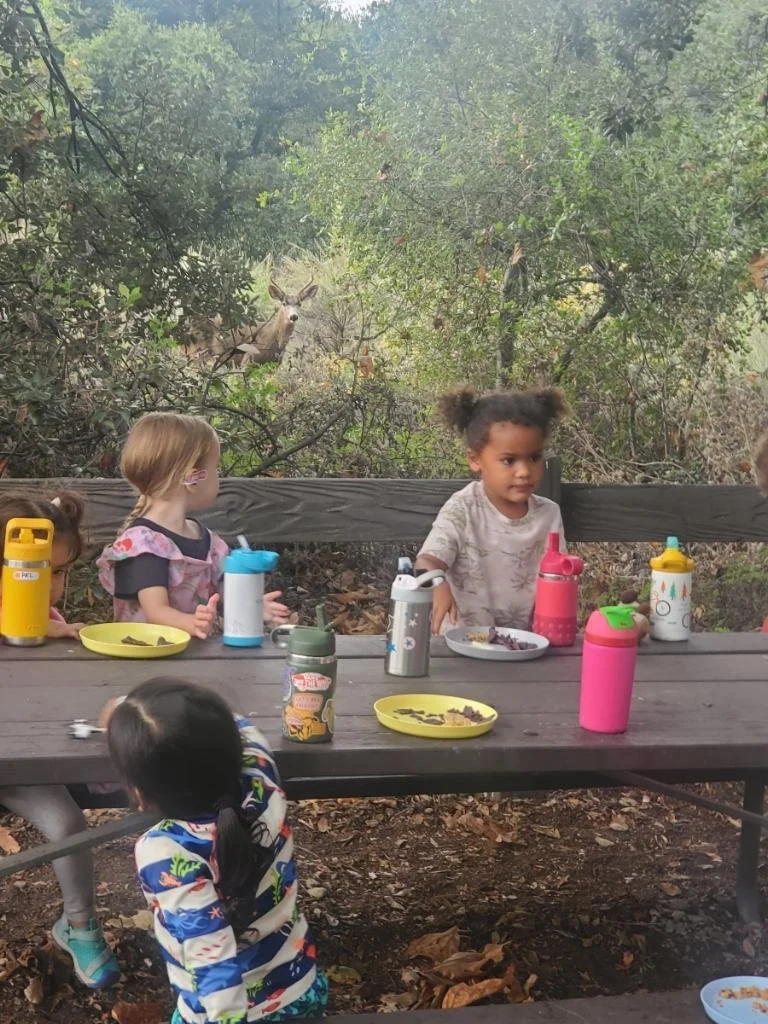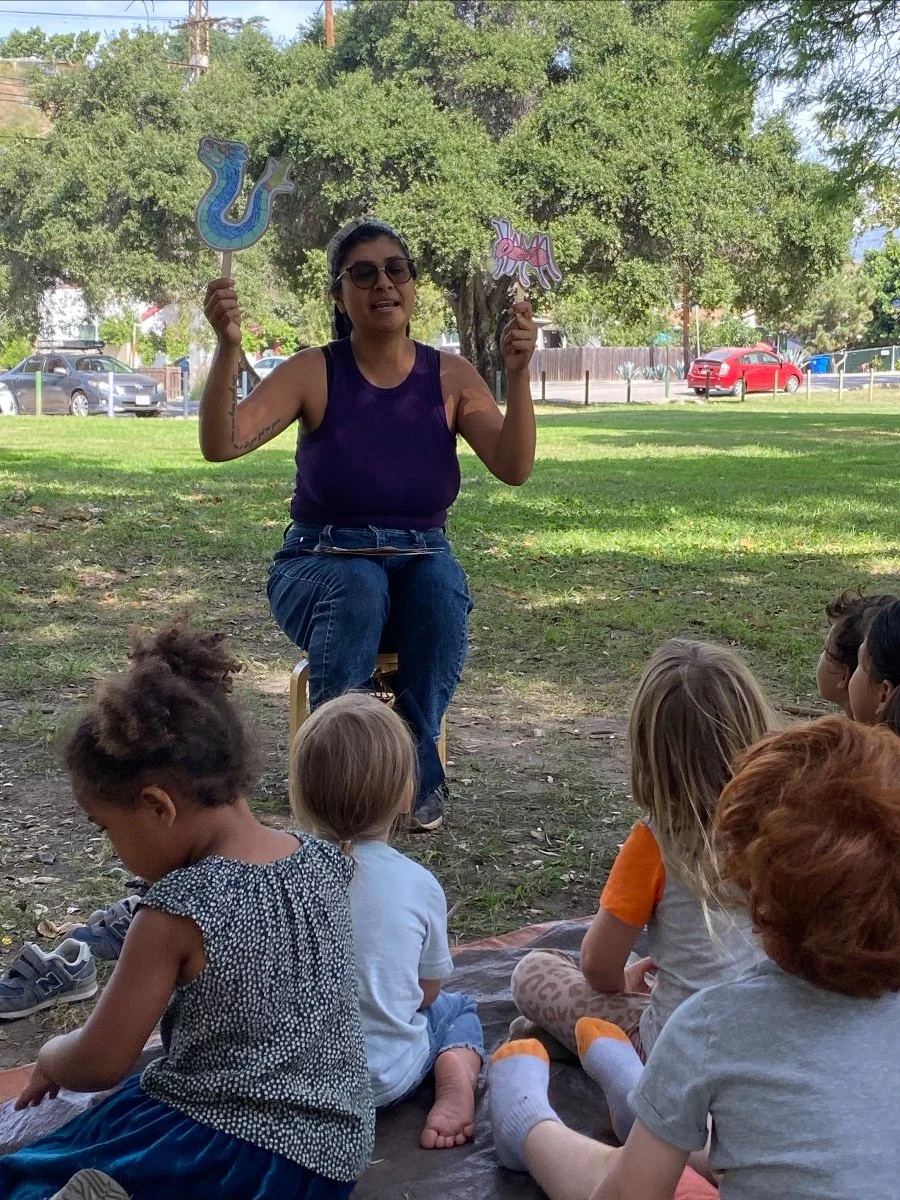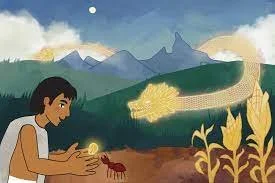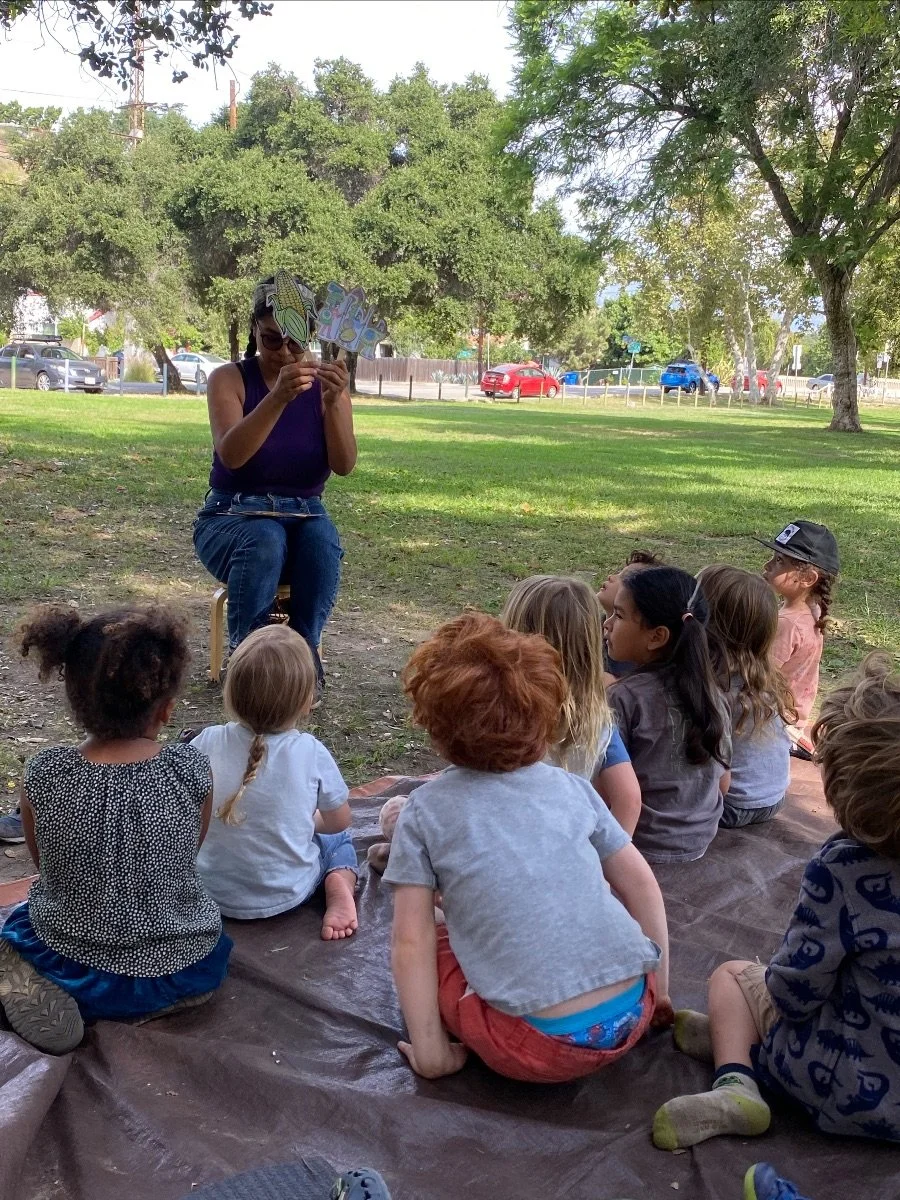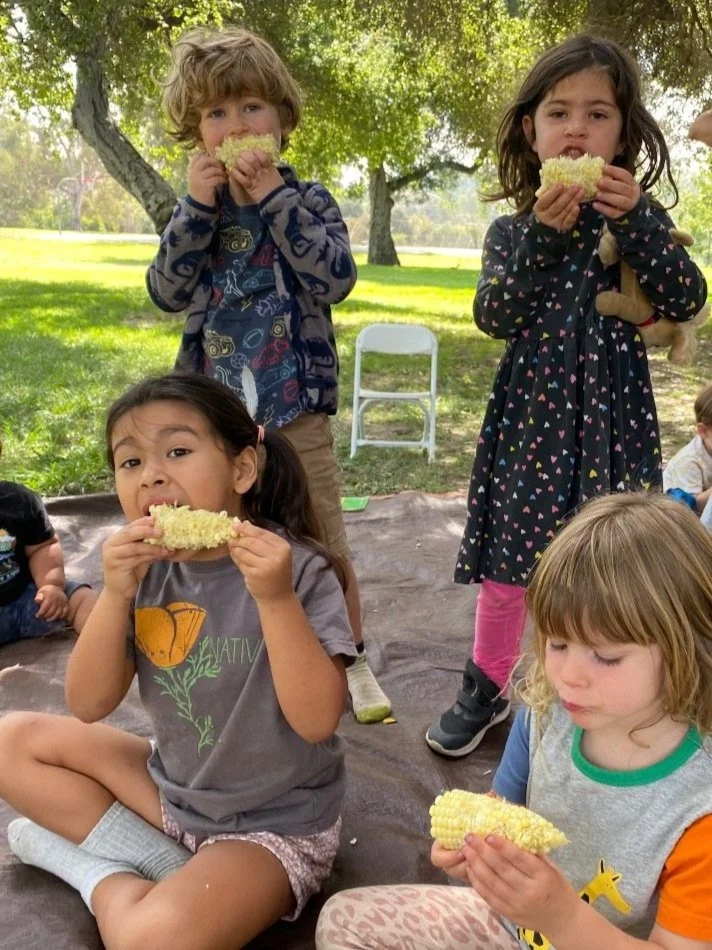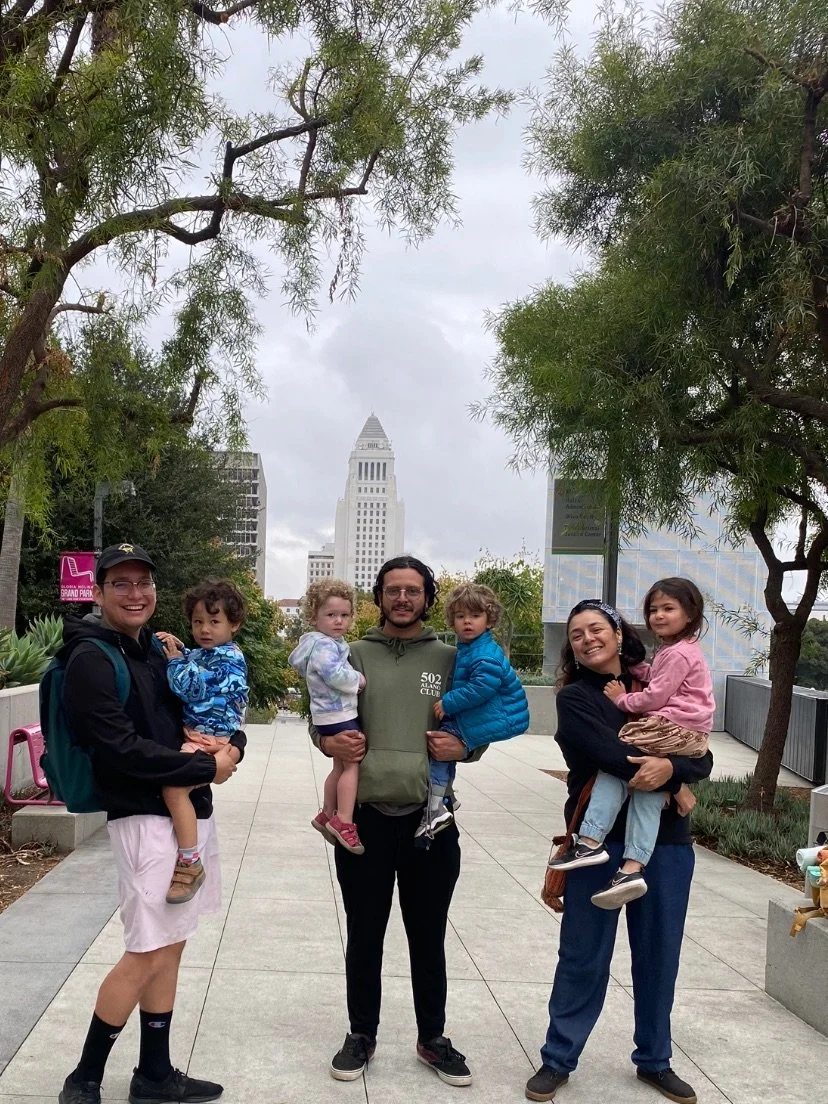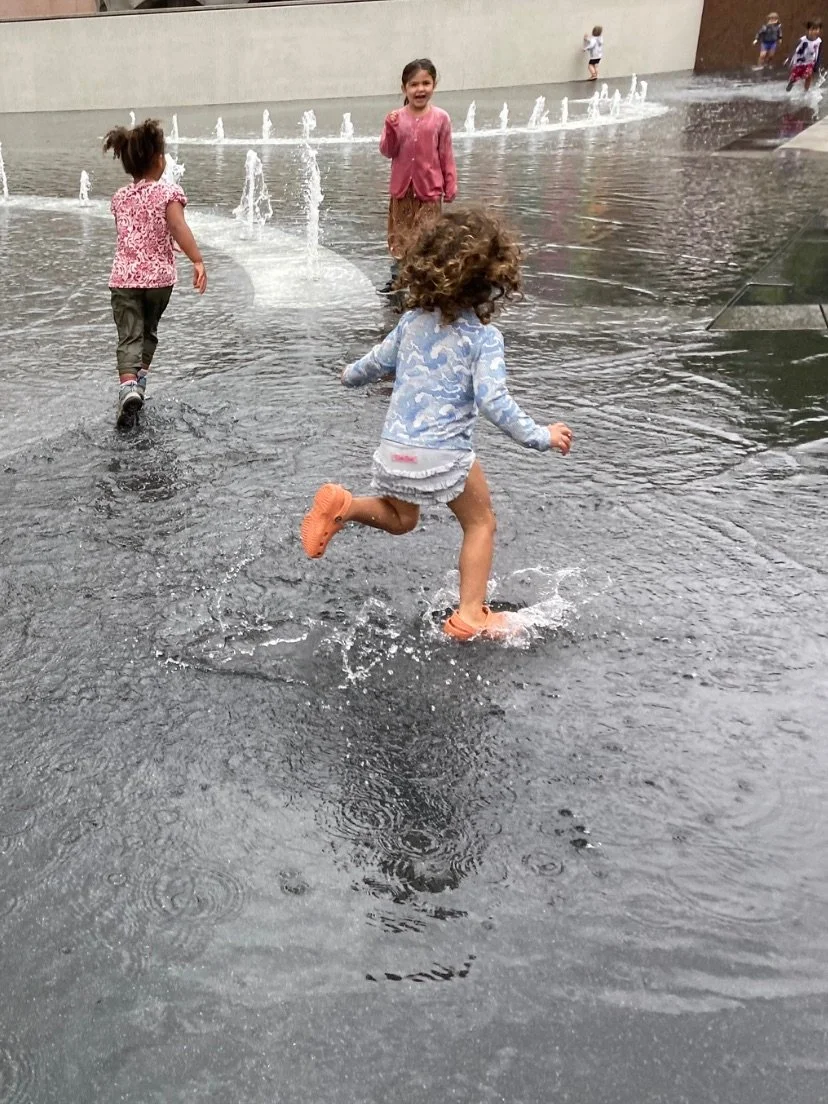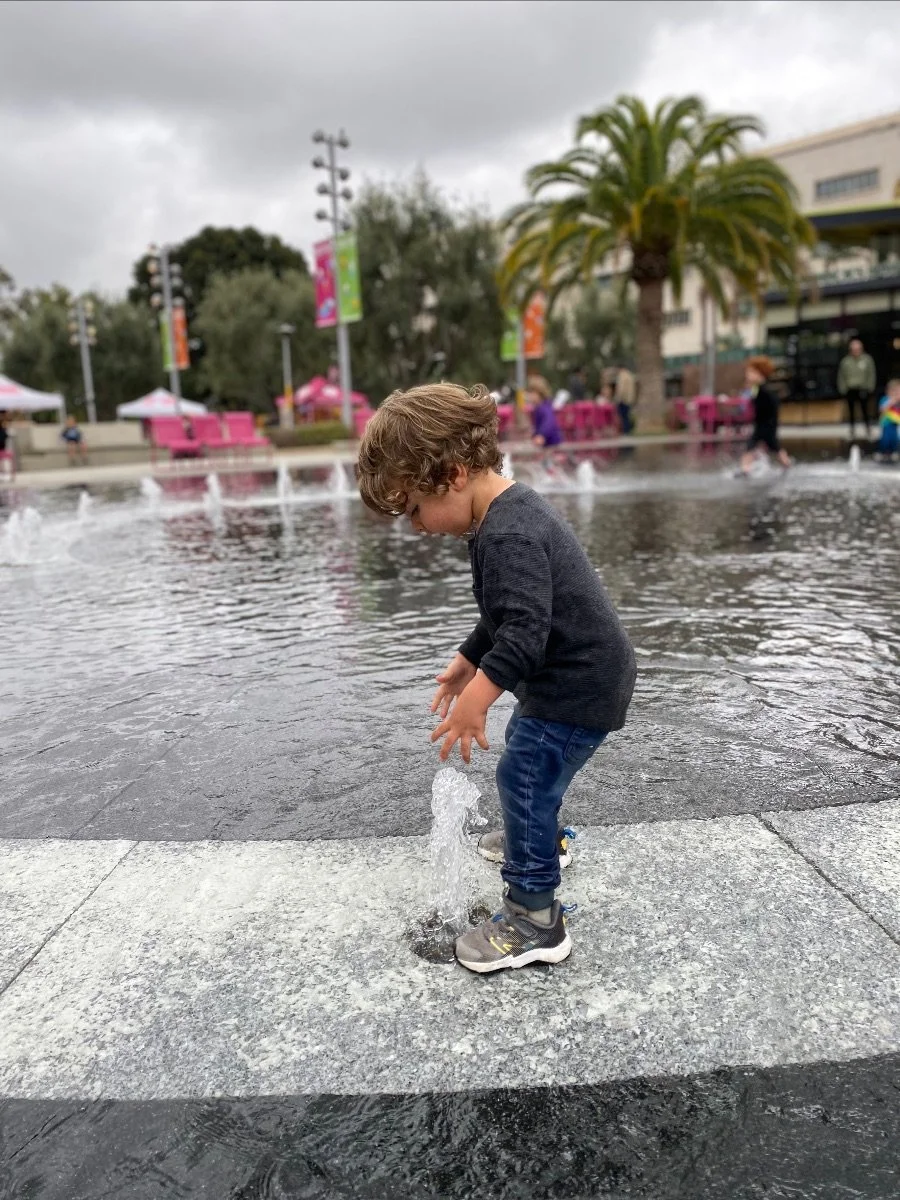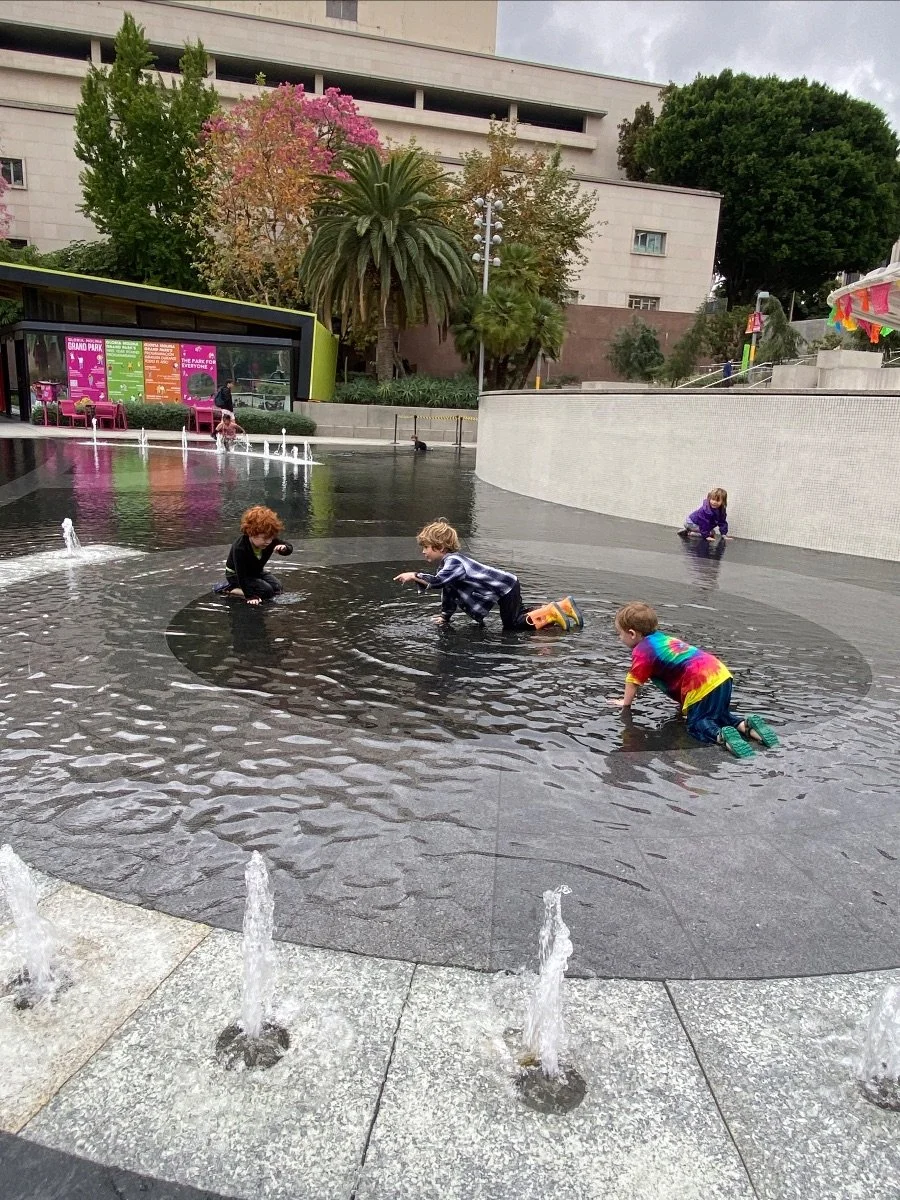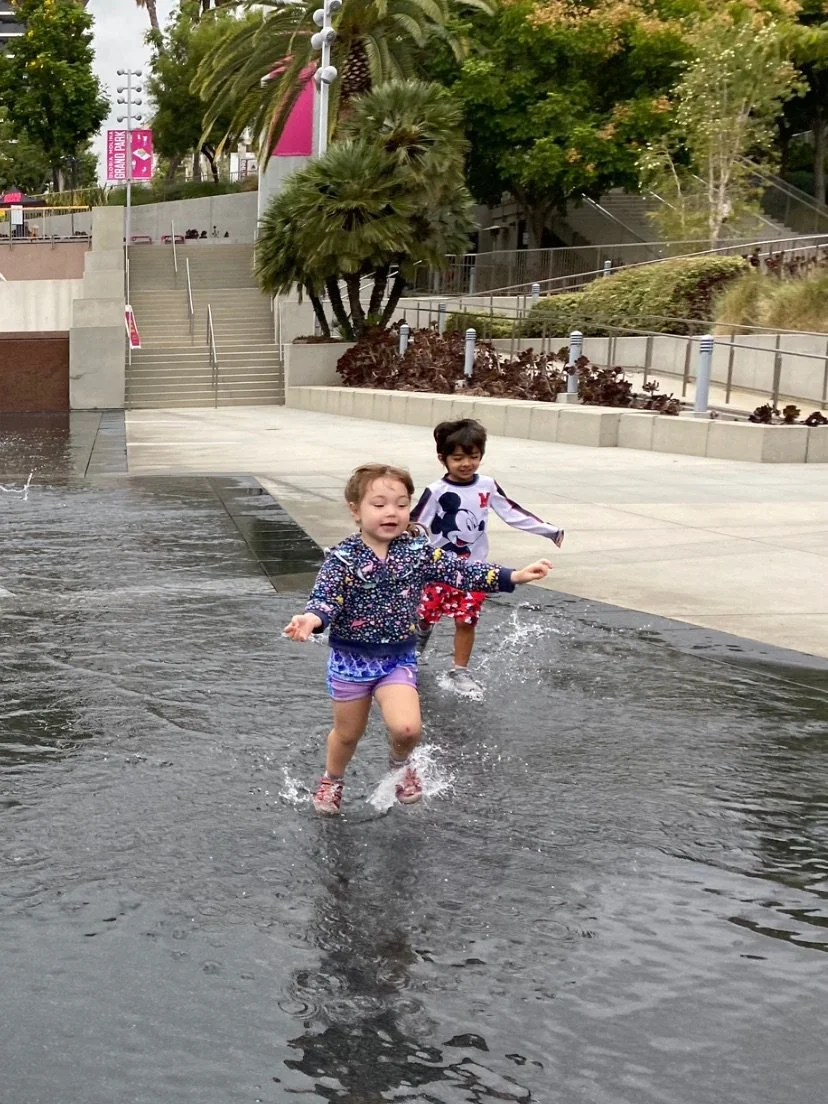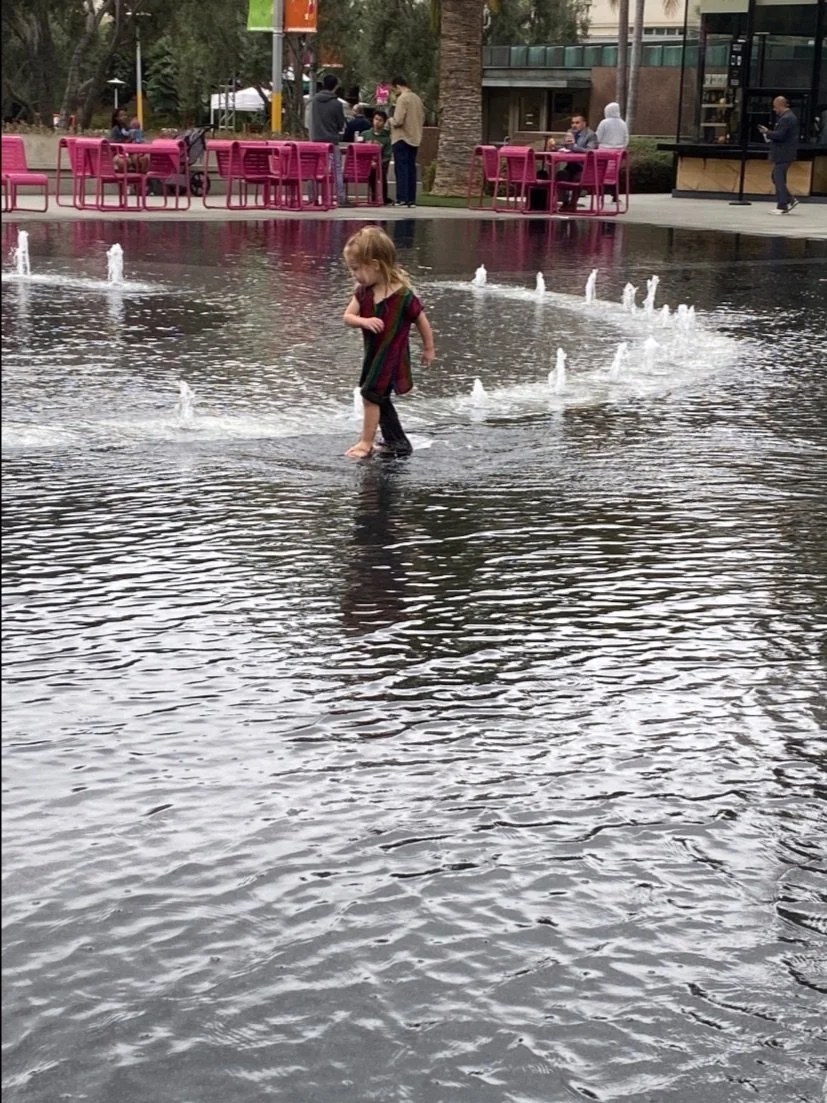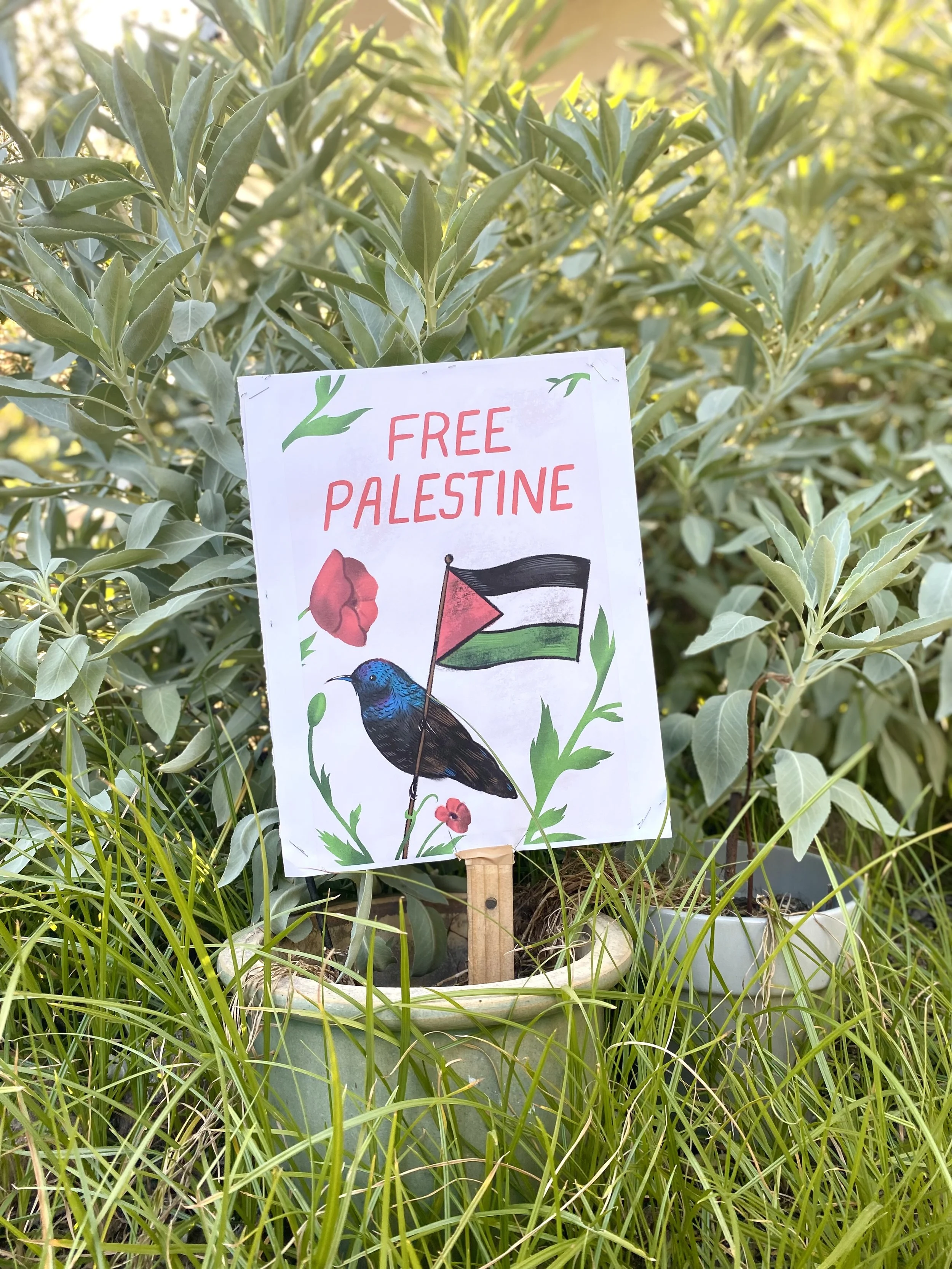“When you encounter a deer in the woods, they are bringing a lifetime of knowledge, sensation, and experience to the encounter, just as you are. When you encounter a tree, they are bringing a lifetime of knowledge, sensation and experience to the encounter, just as you are. There is no measure of sentience, consciousness, or intelligence that isn’t just each of us living, breathing, beings. Beings who, when they see you, recognize you. Can you recognize them?”
October, 2023
Early in the month, one morning, the rustling leaves announced visitors. A family of deer came to visit us as we were enjoying our snacks. At first, antlers emerged amid the sagebrush, followed by ears. Suddenly, a buck's head lifted, and the children caught sight of the rest of the family. A blessing, a messenger of gentleness, deer medicine for the month of October.
According to The Mule Deer Foundation, mule deer—including both mule deer and black-tailed deer—are known for their large, mule-like ears, which inspired their species name hemionus, meaning “half-mule.” Their coats are mostly grayish-brown with clearly visible cream or white rumps. Adult mule deer generally weigh between 125 and 300 pounds and reach about 3.3 feet in height at the shoulder. They are herbivores.
Mule deer inhabit much of western North America. Their range stretches from the coastal islands of Alaska and along California’s Pacific Coast all the way down to southern Baja, Mexico. Their distribution includes the far northern part of the Mexican state of Zacatecas and extends northward through the western Great Plains into Canada—reaching provinces such as Saskatchewan, Alberta, British Columbia, and the southern Yukon Territory.
This range encompasses seven broad ecoregions where mule deer populations share ecological characteristics: the Intermountain West, Great Plains, Northern Forest, Colorado Plateau Shrubland and Forest, Coastal Rainforest, California Woodland Chaparral, and the Southwest Desert.
That morning felt like an invitation—an unmistakable call for us to take notice. We followed discreetly to discover what they were up to, and they graciously allowed us to peek into their day. Eaton Canyon continues to gift us immense beauty.
Remembering the beautiful time spent with our relative Eaton Canyon.
On Indigenous Peoples’ Day, Tía Janil shared with us the Mexica story of Corn.
The stories of the first inhabitants of Mesoamerica recount that, in the period preceding the arrival of Quetzalcóatl, the Mexica survived by subsisting on roots and the animals they hunted, occasionally growing weary of their limited diet. A rumor spread that, among the mountains, there existed a plant with golden and luminous fruits that could sustain them forever.
Some daring individuals ventured to obtain it, but they were unsuccessful. After several attempts, the people pleaded for help from the gods. These entities responded to their call, but even with all their strength, they couldn't traverse the mountains.
Then, Quetzalcóatl learned of the situation and, out of love for humanity, decided to help. Unlike the other gods, Quetzalcóatl did not attempt to move the mountains. Instead, he opted for another resource: intelligence. In this way, the Feathered Serpent began to contemplate how to obtain that food.
One day, Quetzalcóatl observed a small ant carrying one of those precious grains. At that moment, he decided to ask the ant how she had obtained it. This ant was kind and good, so she told him about the path he had to traverse to reach the seed. Gradually, they became friends. Later, Quetzalcóatl asked the ant to guide him to the corn, and she agreed.
However, the path couldn't be traversed by beings of great size, so Quetzalcóatl decided to transform into an ant and embark on the journey. It is said that, to reach the place where the corn was, the Feathered Serpent had to face many difficulties. They encountered predators, endured heavy rains, and even faced the possibility of being stepped on by a careless animal. But Quetzalcóatl’s love for the people was so great that he never thought of giving up or turning back.
Finally, Quetzalcóatl returned to the people and handed over the precious golden seed. From that moment on, they cultivated it with care and diligence.
And since then, corn not only forever transformed Mexica gastronomy, but over time became an indispensable and characteristic part of Mexican, Turtle Island, and Abya Yala identity.
Thank you, Janil, for making the time to share with us the story—and some delicious corn..
Field Trip to Grand Park and the Downtown LA Library
Our field trip to Downtown was a delightful experience. Although our primary goal was to visit the ofrendas at Grand Park, the children displayed little interest in them and were drawn to the water instead. Despite the colder temperatures and light morning rain, our water enthusiasts were undeterred, thoroughly enjoying themselves and bringing joy to all the working grown-ups in Downtown. It was heartening to witness the smiles on people's faces as they observed the kids playing freely in the water—truly adding a sense of joy to Downtown.
Our journey continued as we walked five blocks from Grand Park to the Richard J. Riordan Central Library, nestled among the hotels and towering office buildings of Downtown L.A. Built in 1926, this architectural gem is a recognized national historic building. The eight-story structure stands as the third-largest central library in the U.S., boasting a collection of over ten million items, ranging from popular fiction titles to rare genealogical publications, historic photographs, and U.S. patents.
The children were nothing short of incredible during our walk. Carrying their backpacks, admiring the buildings, and walking with enthusiasm, they garnered waves and admiration from onlookers. This field trip has become one of my favorites.
Upon reaching the library, we caused a bit of a ruckus—although the sweetness of the photos may deceive you. =) However, before leaving, we ensured the children's area was left nice and tidy.
A special thanks to Rosemary (Paz's mom) for volunteering and contributing to making this field trip both safe and enjoyable for all the kiddos.
Check out a little bit of history about the library here: Los Angeles Central Library: The Story of an LA Icon
Incantation for the World:
May we move toward a world of complete liberation, free of violence. May every living being have a dignified life. May we erase the illusion of separation in which we live and move away from systems that require the oppression of others human and non-human for some to thrive.
“Mother Earth is our first teacher. She has informed us that oneness does not equal sameness. She shows us this through the harmonious balance that is held in the rich biodiversity that exists within our world. To achieve oneness we must transcend our differences and embrace the integration of every individual aspect of humanity into the whole, knowing that all healthy systems are comprised of complexity and an abundance of diversity.”
― Sherri Mitchell Weh'na Ha'mu Kwasset

